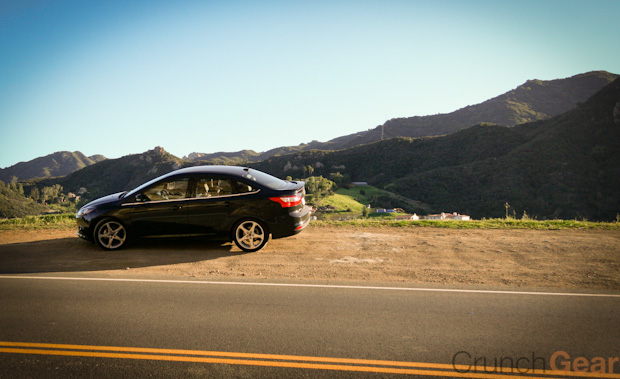
What’s the first thing you think when you hear the word “focus.” You might respond, “camera,” or “cheap car,” or “concentration,” but definitely not, “fun,” “technological,” or “practical.” This will likely change in a second because those are the words I’d use to tentatively describe this year’s Ford Focus, a small, sporty car for just about everybody.
More Americans are ditching their gas-guzzling SUVs and heading straight for the small car market. From a marketing standpoint, Ford’s approach to selling a small car to people is by offering all the features found in their larger vehicles, but in a smaller package. No longer do people have to feel ashamed for “cheaping out” and getting a Focus, instead, it’s simply a lifestyle choice. Why should the choice take out all the fun of owning a car?
I got a chance to drive the new 2012 Ford Focus last week in LA. Those in the area know the hills overtop the city feature some of the most entertaining roads in the country.
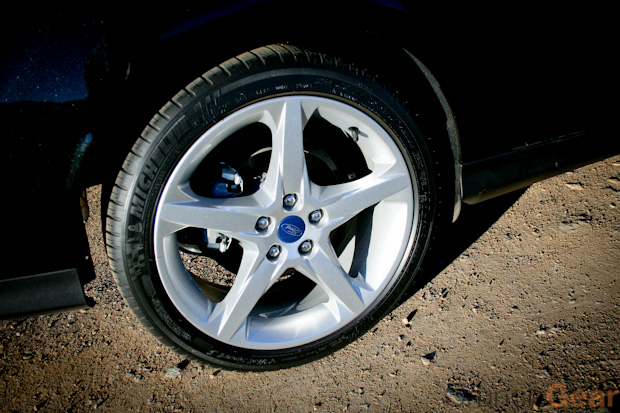
After getting out of the parking lot, I often open it up and get a feel for how hard the engine works—you gotta see what the thing is made of after all. After getting on the gas you notice something very apparent about the Focus: it’s dead quiet. Sure there’s a welcome rumble from the 160 hp 2-liter four banger, and a smooth sensation of speed; but we couldn’t believe how amicable the noise levels were, even with windows down on the PCH. Somewhere down the road, we turned off the PCH and into more “suitable” driving conditions. This is where we learn the word fun.
Fun, Fun, Fun ‘til her daddy takes the T-bird away
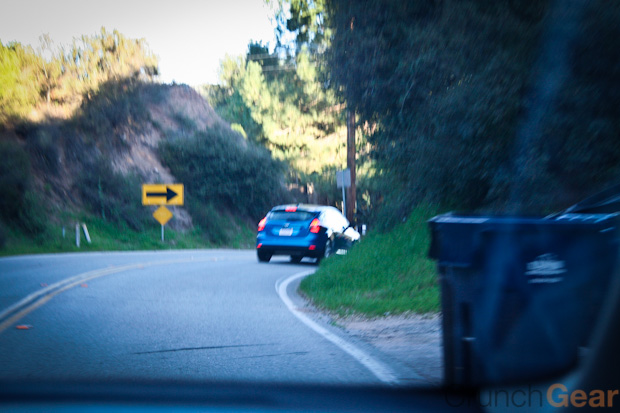
Driving canyon roads isn’t exactly the best way to learn a new car. It’s best to know a few of its limits before making sharp turns around high cliffs sans guardrail. One of those heart-sinking quick left-right “S” curves, similar to the corkscrew at Laguna Seca, was calm and collected with only a small amount of body roll. Hard turns are tight and firm and the tires gasped very lightly. Engineers claim that in those situations, the Focus’ uses new software to aid the driver in keeping grip and direction. The new software creates a virtual torque vectoring and is Ford’s way of keeping traction at the front wheels in excessively thrilling turns. Essentially placing brake torque on the inside wheel when it slips so that engine torque goes to the gripping wheel. For just a software program, it seemed to work quite well.
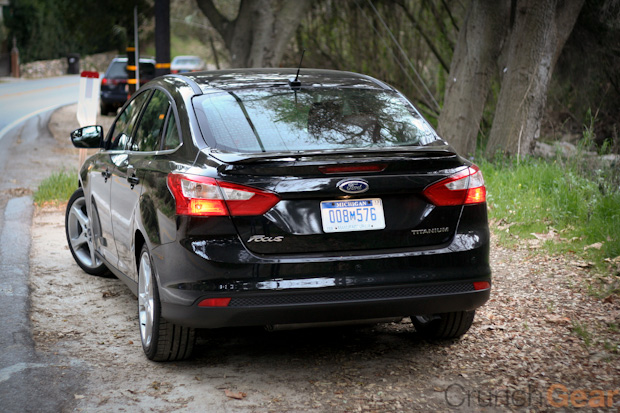
Another feature that keeps the adrenaline levels high is the dual-clutch transmission. Dual clutches are neat because the offer really fast shift times and better fuel economy than a manual. In sport mode, the transmission kept to the lower gear, as one would do in a manual, allowing max power to be within close reach. It worked perfectly in the hills. One disconcerting issue with the sported hills driving were the brakes. While we actually had no issue stopping, the pedal was just a bit mushy. The electronically assisted steering (EAS) was also a touch light for our tastes, but we can imagine people will like how effortless it is.
MyFord Touch is the focal point
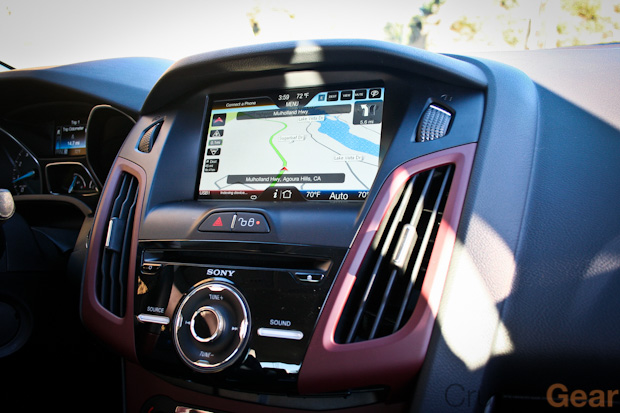
MyFord Touch is making its way into more of the Ford lineup with the addition of the Focus. But, gone are the wings around the gauges. Instead there is a single display in the cluster with analog gauges on either side and you still get the steering wheel control. Other than that the system is identical to those in the Edge and Explorer. Thanks to free updates, the system seems to be moving more swift these days, but we’re still longing for more. And, even though the voice command recognizes over 10,000 commands, we found it hard to figure out any one of them. Though it is claimed that saying words like, “Warmer,” will actually raise the climate. And saying, “Play artist, The King,” will play Elvis from an iPhone or MP3 player. Connection your mobile device is over Bluetooth or USB, and is still simple to setup. Make sure to get the 10-speaker Sony system, it sounds surprising; great bass, loudness and even treble. The loudness was really tight, with no rattling of plastics or other embarrassing sounds. Easily besting most, if not all, Bose sound systems.
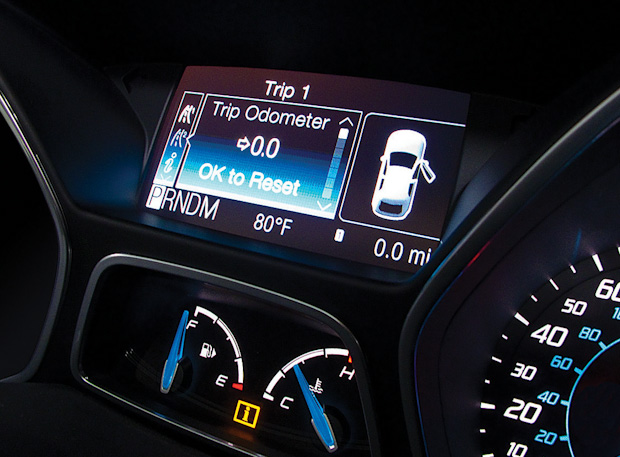
One unexpected feature with MyFord is in-car Wifi. By plugging in a USB modem into one of the two USB ports, a Wifi hotspot is created in the car with support for up to five devices. While it might seem gimmicky, we can a strong case for it, certainly useful for a road trip with 5 buddies and one modem. Radio sources are HD Radio with iTunes tagging, two USBs, Bluetooth audio, SD Card (if not using the slot for navigation), six months of Sirius satellite and AM/FM. Navigation is very good for the class, if not overall vehicles. Colored roads on the map show traffic conditions from Sirius in the same way you’d see it on Google maps. One thing about the navigation we disliked were all the notifications before a turn—there must have been at least four. If you choose to go without MyFord Touch, you still get SYNC, a pretty capable telematics system with turn-by-turn directions, weather, traffic, stocks and so on.
Opt for the Parking Technology package and the Focus comes with a rear view camera and Ford’s Active Park Assist. The system basically finds a parking spot and does all the steering work to Parallel Park. You’re just required to gas and brake. It’s a pretty cool feature and it parks in under 24 seconds. The EAS that is becoming standard in more cars makes it a relatively cheap and easy option for carmakers. Again, this is all software. Not what you’d expect from a Focus.
Practical makes perfect
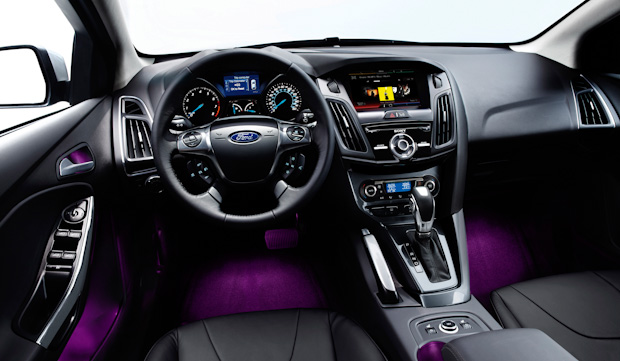
A car’s basic function is traveling from point A to point B. So why do people choose one over the other? That comes down to practicality and we think the Focus is a very practical car. It has the right recipe to be a very high selling car.
Inside, you get an interior with the perfect blend of sport and luxury exponentially better than previous Foci. In fact, the interior is best in class. Every surface and button seems well thought out, from the haptic feedback of hard buttons to the smooth dashboard and color-changing LED ambient light. But, there were a few dead buttons in the headliner, and nothing makes you feel worse about a base model like dead buttons. Other than that, whoever made the interior was most likely very particular.
Interior room is very good, more so for the front. Rear legroom isn’t the greatest, but it’s pretty good for the class—though you won’t see me offering to sit in the back for lang hauls. Headroom is fantastic in the front; the cabin feels airy and spacious and we were never cramped. We liked the hatchback because it offered more cargo room. Unlike the sedan, the hatchback makes use of the space above the trunk.
Not only can you move a small apartment in the Focus, but also efficiently. Ford claims that fuel economy is 40 mpg, but it seems that would be hard to reach—we got only 25 mpg on the 60-mile course around LA. We can only assume what more sane conditions would bring.
While fuel economy and cargo room do add points for practicality, it still doesn’t make the car. Ford knows this; they have to sell them after all. We’re going to go on record and say that the Focus is easily the best looking car in its class. The style is unmistakably European. The feel is also. From the great interior materials to the way it handles, it’s like no other Ford in the US. Functionality, technology, practicality and a fun-to-drive attitude make this a very appealing car. There is no doubt it speaks for itself and will sell very well. In fact, I want one.
Specs:
Base Price: $16,995–$23,490
Engine: Direct injection, 2.0-liter inline-4
Power: 160 hp and 146 lb-ft torque
0-60: 7.8–8.9 sec
Observed MPG: 25 mpg